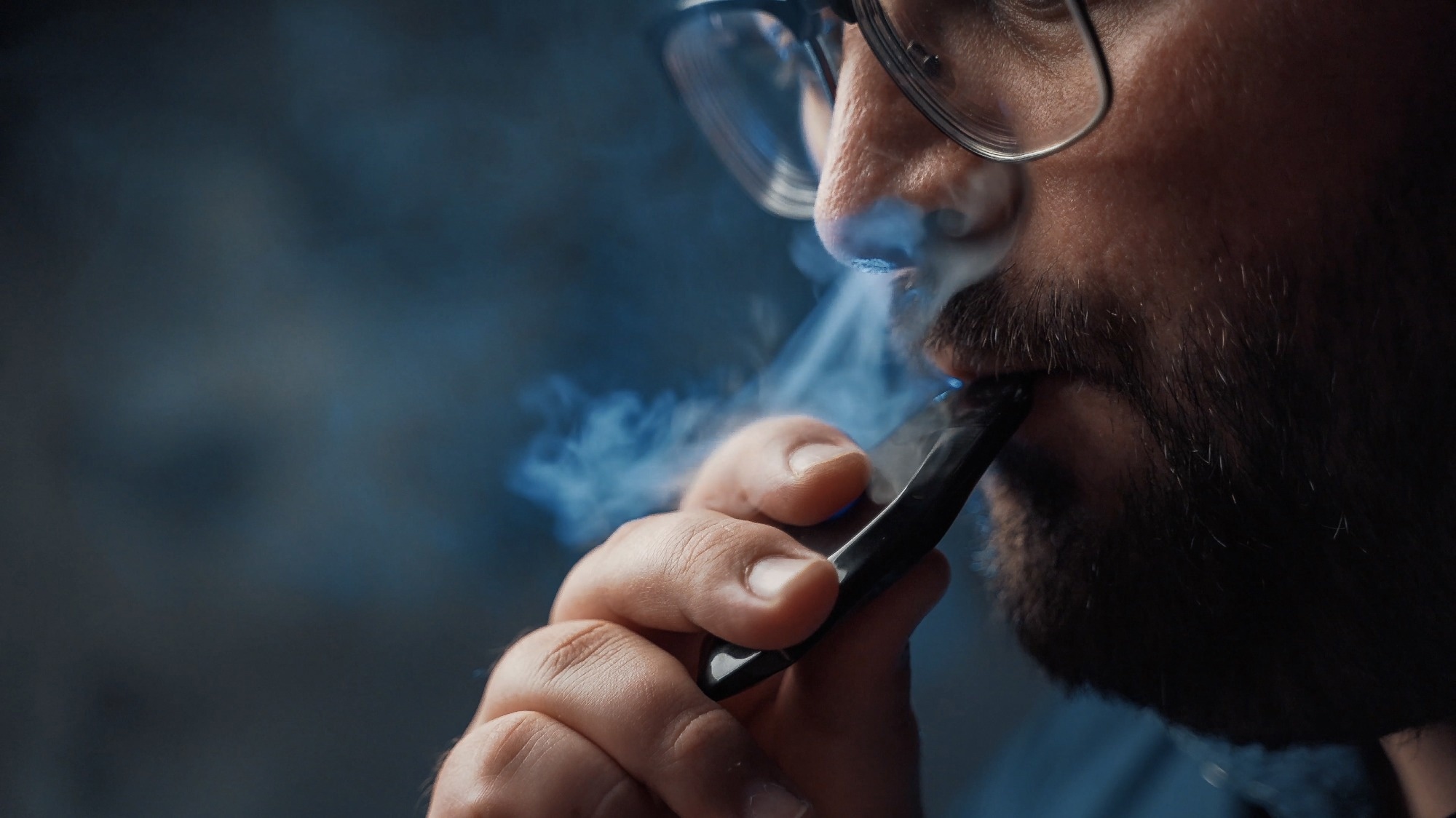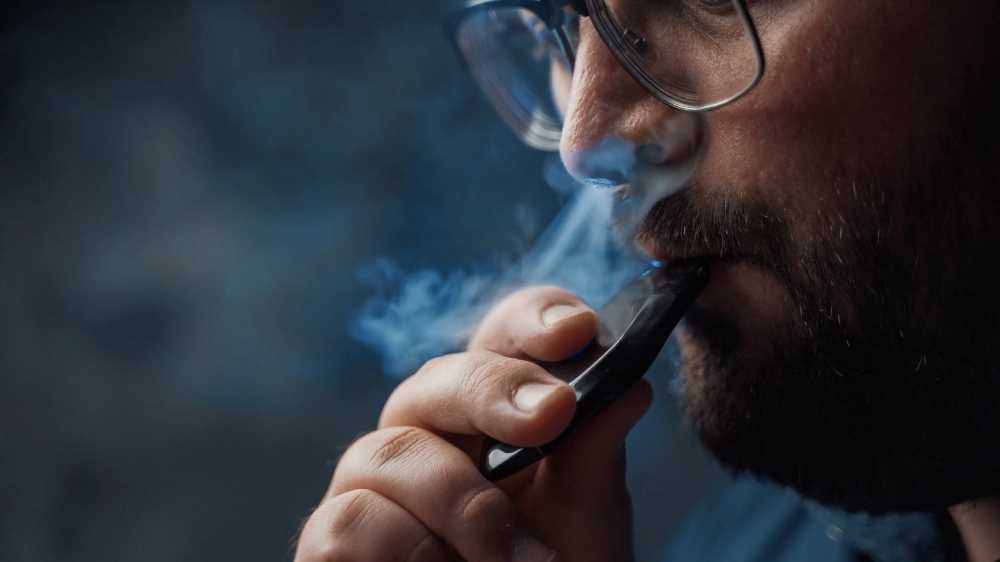In a recent study posted to the bioRxiv* pre-print server, researchers at the University of California, Riverside investigated the effects of electronic cigarette (EC) use as a risk factor for severe acute respiratory syndrome coronavirus 2 (SARS-CoV-2) infection.
 Study: Does Vaping Increase the Likelihood of SARS-CoV-2 Infection? Paradoxically Yes and No. Image Credit: DedMityay / Shutterstock
Study: Does Vaping Increase the Likelihood of SARS-CoV-2 Infection? Paradoxically Yes and No. Image Credit: DedMityay / Shutterstock
Background
ECs, nicotine delivery vehicles that aerosolize e-liquids, contain nicotine, propylene glycol (PG), vegetable glycerin (VG), and flavor chemicals. These sometimes are promoted as less hazardous than tobacco cigarettes; however, they are not harm-free. There is growing evidence that EC aerosols increase angiotensin-converting enzyme 2 (ACE2), SARS-CoV-2 virus receptors, which increase its binding to host cells, a crucial step for infection establishment in humans. However, there is a lack of studies examining the relationship between ECs and coronavirus disease 2019 (COVID-19) in humans; moreover, the available data is contradictory.
About the study
In the present study, researchers used EpiAirway™ tissues, three-dimensional (3D) organotypic cultures of human bronchial epithelium containing ciliated, basal, and mucus-producing cells to elucidate the effect of vaping and identify the specific chemicals in EC liquids on COVID-19.
A previous study showed that EC aerosol increased ACE2 activity and soluble ACE2 levels in EC users’ bronchoalveolar lavage fluid (BLF). In the current study, the team also measured ACE2 levels and transmembrane protease, serine 2 (TMPRSS2) protease activity in EpiAirway™ tissues, and the magnitude of SARS-CoV-2 pseudoparticle infection.
For 3D EpiAirway™ tissue infection experiments, the team used a 0.3 multiplicity of infection (MOI) of SARS-CoV-2 pseudoparticles. The study protocol simulated an acute EC exposure of the EpiAirway™ tissues over three days, with 50 puffs per day, the range that an EC user typically receives. The team ensured that tissues returned to the incubator between each exposure day. Following the last exposure and before analyses, they again allowed tissues to recover in the incubator for 24 hours.
The Cultex® system generated authentic EC aerosols, including chemicals in the e-liquid plus reaction products and metals formed due to heating the e-liquids in a cloud chamber. The combination of these two air-liquid interfaces (ALI) exposure systems in conjunction with 3D EpiAirway™ models provided an innovative setup superior to experiments in human subjects for understanding how aerosols and viral infections affect the human respiratory system.
Study findings
The authors noted that PG, VG, and nicotine-containing aerosols enhanced the infection of EpiAirway™ tissues by SARS-CoV-2 pseudoparticles in a dose-dependent manner. Notably, benzoic acid provided substantial protection against infection-enhancing effects of PG/VG and nicotine for at least 48 hours after the AL exposure ceased, likely because pH levels returned to normal during this time following vaping. However, BLU™ EC aerosols, which lack benzoic acid, increased pseudoparticle infection, showing that this infection varied with EC brand and e-liquid content. It is why even the low-powered JUUL™ battery, in conjunction with a third-party pod, induced PG/VG or nicotine-enhanced infection.
The authors observed a high correlation between TMPRSS2 activity and the pH of the aerosolized e-liquid. Accordingly, the study results indicated that the low pH of the aerosolized e-liquid lowered infection levels in EpiAirway™ tissues. Therefore, the most likely explanation is that benzoic acid lowers the pH at the ALI to a level that reduces TMPRSS2 activity, which, in turn, reduces infection. Also, low pH aerosols (e.g., JUUL™ aerosols) most likely reduce the exposure of the cryptic receptor-binding domains (RBDs) of the SARS-CoV-2 spike (S) protein and thereby diminishing its ability to bind to ACE2.
Future studies should determine whether benzoic acid and its derivatives interact with proteases involved in SARS-CoV-2 replication to evaluate its effects in the later stages of SARS-CoV-2 pathogenesis. Furthermore, the authors noted varying infection-enhancing effects due to variations in the exposure protocols. This finding pointed out that user topography, which affects nicotine exposure, could affect the health outcomes of EC users.
Conclusions
The current study showed a complex relationship between vaping and SARS-CoV-2 infection, which was highly dependent on the ingredients of the e-liquid used to create the aerosol. The study data will provide EC users with options to reduce their risk of contracting COVID-19. For instance, an acid-containing product may help reduce viral infection. However, the authors cautioned that inhaling benzoic or other acids in ECs may have adverse health consequences too. Nevertheless, the study data could help design future studies examining the effects of electronic cigarette products on SARS-CoV-2 infection.
*Important notice
bioRxiv publishes preliminary scientific reports that are not peer-reviewed and, therefore, should not be regarded as conclusive, guide clinical practice/health-related behavior, or treated as established information.
- Does Vaping Increase the Likelihood of SARS-CoV-2 Infection? Paradoxically Yes and No, Rattapol Phandthong, Man Wong, Ann Song, Teresa Martinez, Prue Talbot, bioRxiv pre-print 2022, DOI: https://doi.org/10.1101/2022.09.09.507373, https://www.biorxiv.org/content/10.1101/2022.09.09.507373v1
Posted in: Medical Research News | Disease/Infection News
Tags: ACE2, Angiotensin, Angiotensin-Converting Enzyme 2, Chemicals, Cigarette, Coronavirus, Coronavirus Disease COVID-19, covid-19, Electronic Cigarette, Enzyme, Nicotine, pH, Protein, Receptor, Research, Respiratory, SARS, SARS-CoV-2, Serine, Severe Acute Respiratory, Severe Acute Respiratory Syndrome, Syndrome, Tobacco, Vaping, Virus

Written by
Neha Mathur
Neha is a digital marketing professional based in Gurugram, India. She has a Master’s degree from the University of Rajasthan with a specialization in Biotechnology in 2008. She has experience in pre-clinical research as part of her research project in The Department of Toxicology at the prestigious Central Drug Research Institute (CDRI), Lucknow, India. She also holds a certification in C++ programming.
Source: Read Full Article
